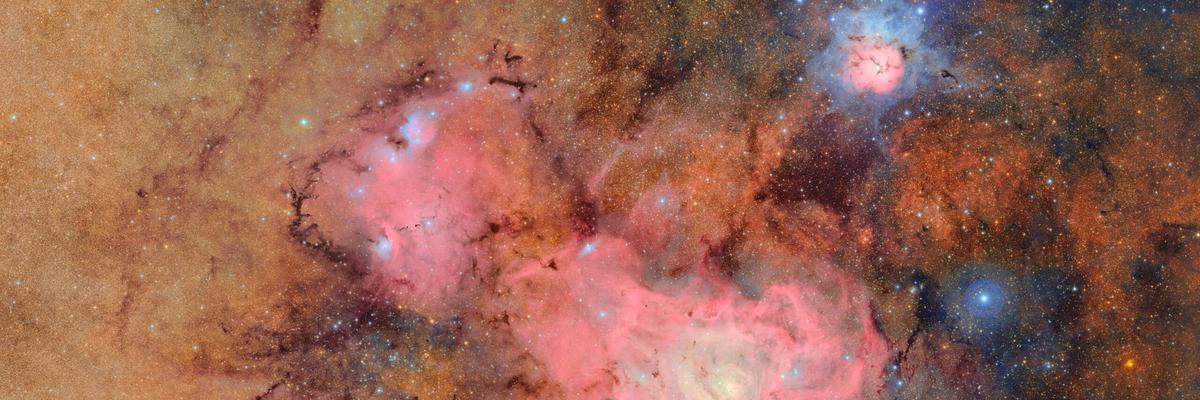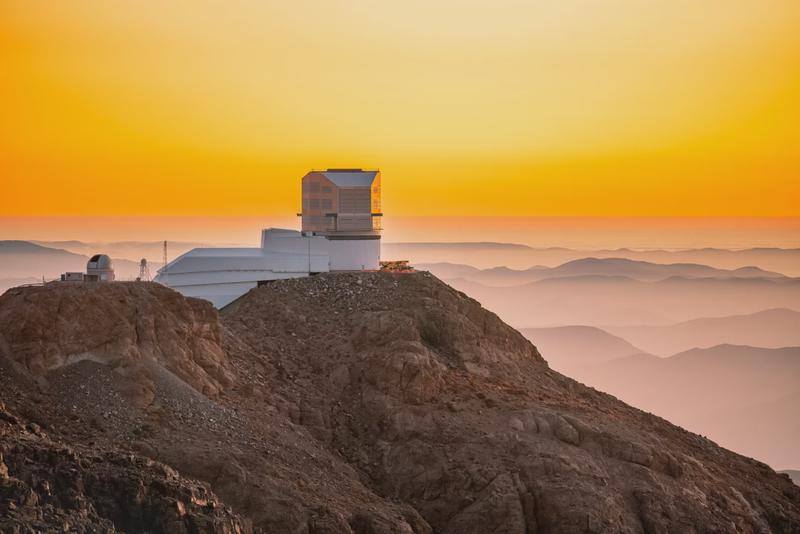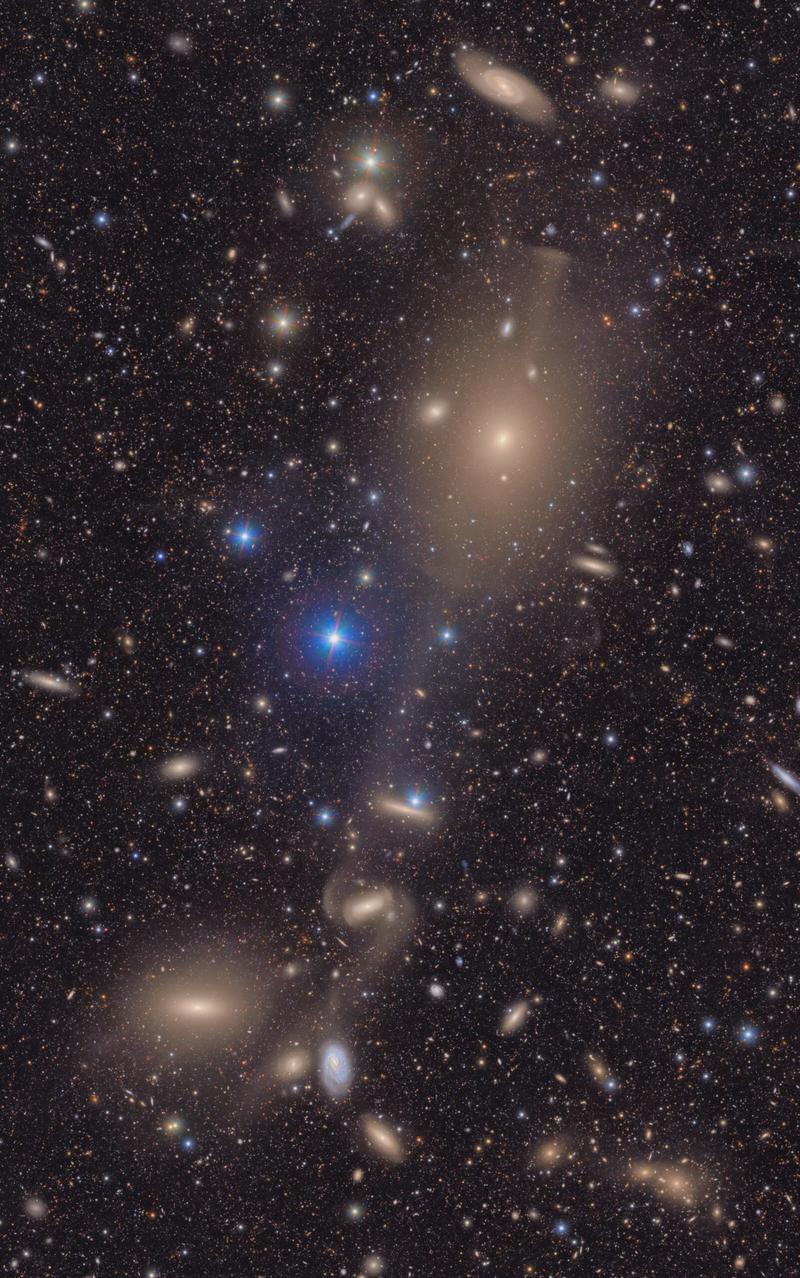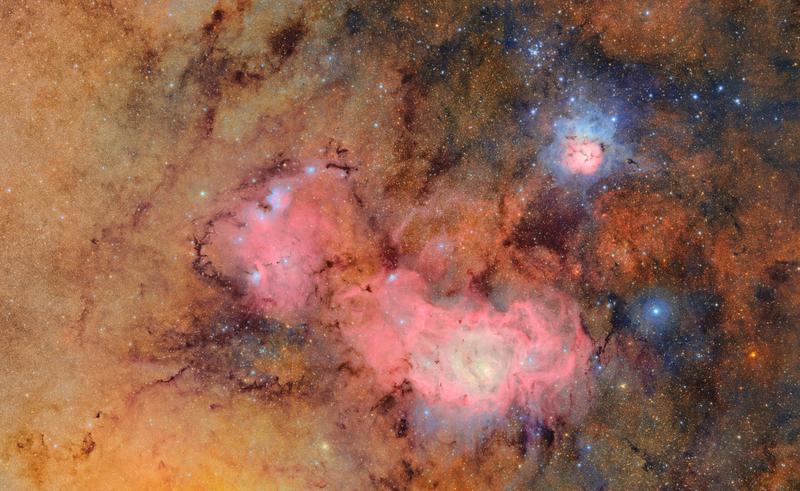Highlight
First images released from what will become the most complete “movie” of the night sky
June 23, 2025
- The first images from the Vera C. Rubin Observatory launch a decade-long LSST survey of the southern sky, set to transform our understanding of dark energy, dark matter, and the transient universe.
- A consortium of Spanish institutions, including IFAE and PIC, is playing a key role in the scientific and technical development of the Vera C. Rubin Observatory.

On June 23, 2025, at 17:00 CEST, the NSF-DOE Vera C. Rubin Observatory is releasing its first images of the universe — what astronomers call the ‘first light’ of an instrument. This event marks the beginning of a revolutionary era in cosmic exploration and can be followed live on the Vera C. Rubin Observatory’s YouTube channel .

Jointly funded by the U.S. National Science Foundation (NSF) and the U.S. Department of Energy (DOE), the observatory is named in honor of astronomer Vera Rubin, a pioneer whose work provided the first strong evidence for the existence of dark matter. The Rubin Observatory sets a new standard for astronomical surveys with its innovative mirror design, unmatched camera sensitivity, rapid slewing capability, and powerful computing infrastructure.
Located in Chile, the Rubin Observatory will produce the most complete movie of the night sky ever made. The survey, known as the Legacy Survey of Space and Time (LSST), will scan the southern sky over the course of ten years. It will allow scientists to explore questions about the nature of dark energy and dark matter, the formation of the Milky Way, the properties of small bodies in the solar system, and the trajectories of potentially hazardous asteroids.

Equipped with the largest digital camera ever built for astronomy, the observatory will repeatedly map the sky to create a high-definition, ultra-wide time-lapse of the universe. Its main goals are clear: to understand dark energy and dark matter, to catalog the solar system by observing millions of asteroids and comets, to explore the transient sky, and to map the Milky Way to uncover the structure and history of our galaxy.
Thousands of people from over 30 countries have worked on the Vera C. Rubin Observatory. From Spain, a consortium is participating that includes the Instituto de Ciencias del Espacio (ICE-CSIC), the Institut d’Estudis Espacials de Catalunya (IEEC), the Institut de Física d’Altes Energies (IFAE), the Port d’Informació Científica (PIC), the Instituto de Física Teórica (IFT-UAM/CSIC), the Centro de Investigaciones Energéticas, Medioambientales y Tecnológicas (CIEMAT), and the Instituto de Astrofísica de Canarias (IAC), playing a key role in the scientific and technical development of the project.

Studying the dark energy
The Legacy Survey of Space and Time (LSST), which will be carried out over a decade by the Vera C. Rubin Observatory, marks a turning point in cosmic exploration. For the first time, we will be able to observe the entire sky repeatedly over the years, allowing us not only to detect millions of galaxies at unprecedented distances, but also to study how the sky changes over time.
“This unprecedented capacity for continuous monitoring of the universe will provide a dynamic view of the cosmos. Combined with data from other international projects, such as the Euclid mission, LSST images will offer key insights into the evolution of the universe and help unravel the mysterious nature of dark energy,” says Cristobal Padilla, scientist at the Institut de Física d’Altes Energies (IFAE). IFAE has played a key role in the development of the telescope’s control and monitoring software—an essential component that enabled the acquisition and public release of the first LSST images.
“Seeing the first images from LSST is incredibly exciting, and this is just the beginning. We’re seeing the first frames of a decade-long movie of the Universe that will change the way we study the cosmos”, confirms Jorge Carretero, cosmology project scientist and PIC data support.
The PIC team, operated through a collaborative agreement between CIEMAT and IFAE, is implementing an Independent Data Access Center (IDAC) powered by CosmoHub, which offers the scientific community a powerful and easy-to-use portal to explore and analyze the vast amount of data produced by the telescope.

Among the many researchers contributing to this mission, there are members from ICE-CSIC and IEEC, who have played a key role in the scientific and technical development of the ambitious Rubin Observatory project. Specifically, these researchers will lead the observations with the Gran Telescopio Canarias (GTC), a 10.4-meter diameter telescope located at the Roque de los Muchachos Observatory on the island of La Palma, for the spectroscopic follow-up of transient objects discovered by the LSST survey.
“This is the first time that a telescope with such a large aperture, measuring more than eight meters in diameter, has been used entirely to scan the sky for ten years. In addition to producing a dynamic movie of the entire southern sky over that decade, it will allow all the images to be combined to detect the faintest objects ever observed from Earth. For the study of the transient universe, this means having the most precise and productive machine for discovering supernovae and other stellar explosions, with more than one hundred thousand alerts of new objects every night,” comments Lluís Galbany, researcher at ICE-CSIC and IEEC.
“The LSST survey, which will be carried out at the Vera Rubin Observatory, will allow us to uncover the nature of dark matter and characterize the evolution of dark energy. This is an extraordinary opportunity to increase our understanding of the fundamental physics associated with the most pressing problems in cosmology”, comments Juan García-Bellido, cosmologist and researcher at IFT-UAM/CSIC.
“The Rubin Observatory marks a turning point in astronomy. We will no longer depend on luck to observe supernovae, detect new asteroids, or variability in starlight. Its way of observing the sky will allow us to track any change with precision and consistency without relying on chance,” points out Laura Toribio San Cipriano, researcher at the CIEMAT cosmology group.
The CIEMAT has participated in the scientific commissioning of the Vera C. Rubin Observatory, collaborating in the analysis of the system’s performance, including the stability and dynamic response of the primary-tertiary and secondary mirrors, the structural behavior of the telescope during observation movements, and the validation of data quality before the start of scientific operations.
The IAC has participated in defining the agreements to provide observing time from the Gran Telescopio Canarias (GTC) to scientific programmes related to LSST. Likewise, various IAC research groups are actively participating in preparing for the scientific exploitation of LSST in several lines of research, including deep imaging of galaxies, dwarf galaxies, intracluster light, the Milky Way and the Local Group, stellar magnetic activity, highly energetic processes in galaxies, gravitational waves, galaxy clusters and cosmology, substellar science, small bodies in the Solar System, transient objects, and galaxy evolution.
Several members of the Spanish consortium institutions, including IFAE, also hold leadership positions in the Dark Energy Science Collaboration (DESC), an international scientific collaboration that will perform high-precision measurements of fundamental cosmological parameters using data from the LSST mapping project. They also lead the project’s Computation and Simulations area.
The IFT-UAM/CSIC, which collaborates with DESC, has studied how atmospheric conditions affect data quality. To do so, they developed methods to mitigate data contamination by applying lessons learned from previous mapping projects, as well as research on how to incorporate new techniques, some of them based on artificial intelligence. “The goal is to guarantee the quality of the data from which results are obtained on the age, composition, and structure of the universe,” says Martín Rodríguez, postdoctoral researcher at the IFT-UAM/CSIC.
- Additional Material
- Vera C. Rubin Observatory’s YouTube channel
- IFAE Research group
- Observational Cosmology Group
- Contact
